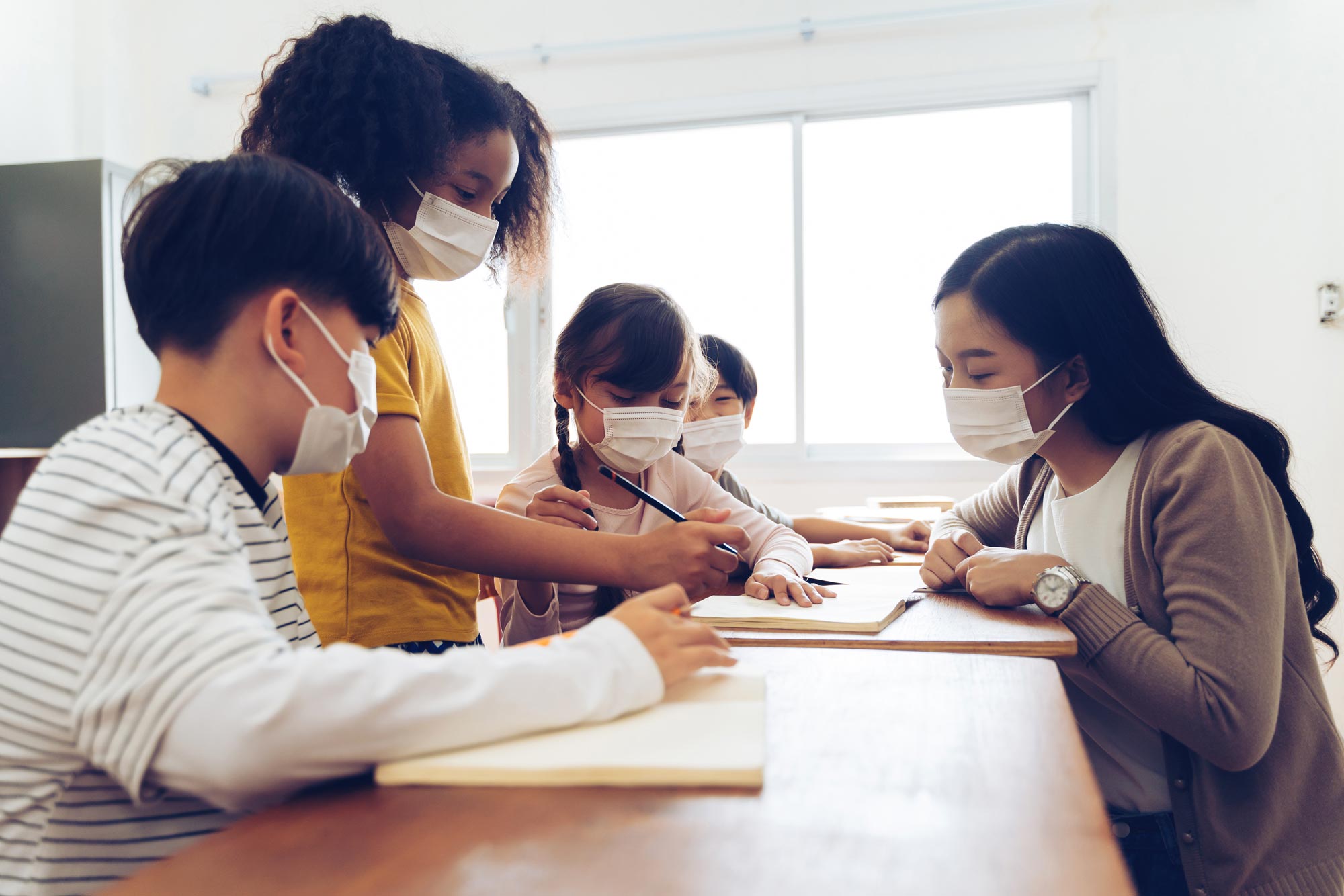This month, students and teachers across the country are returning to classrooms amid an ongoing pandemic. Many have spent the past year dealing with illness, economic hardship, virtual and disrupted learning, racial unrest and more. Some have lost parents, caregivers or loved ones.
Tish Jennings is a professor at the University of Virginia’s School of Education and Human Development and an expert on teacher stress, mindfulness and social-emotional learning. In 2018, Jennings published a book on the trauma-sensitive classroom that outlined how compassionate practices can create a better learning environment for all students.
We caught up with Jennings to talk about how trauma-sensitive practices can help students adjust to the classroom this fall – and set the foundation for a successful, enriching school year.
Q. Can you explain how trauma affects learning and academic achievement?
A. When any of us are dealing with trauma, we prioritize our survival. It’s a built-in biological reaction to situations where our lives are threatened in some way or another.
For example, if you’re living through dangerous circumstances, you can become hyper-attuned to threat around you all the time, so you can protect yourself. We call that hyper-vigilance. And that’s problematic for children when they’re trying to learn, because if their attention is constantly directed toward preventing anything threatening, they can’t focus their attention on academic tasks – especially those tasks that require a deep, focused attention, like reading or math, that requires working memory.

Tish Jennings is an expert on teacher stress, mindfulness and social-emotional learning and has published a book on the trauma-sensitive classroom. (Photo by Dan Addison, University Communications)
The other one that’s common is something called dissociation. It’s basically emotionally shutting down because whatever the person is dealing with is too difficult to actually process. That can take a lot of different forms, but with younger kids, the common thing is looking dazed, spaced-out or depressed. If you’re dissociating, you’re not following what’s going on around you. A teacher may call on a student to answer a question, and they will be completely lost.
Depending on the child, it can also go along with behavioral problems. For example, if you’ve been exposed to a lot of hostility growing up, you may over-interpret behavior as hostile. So if I’m a kid with this tendency walking down the hall and somebody bumps into me accidentally, my first thought might be that they’re trying to hurt me and I might lash out without thinking. I’m overreacting to any situation that I think is threatening, and I’m interpreting other people’s behaviors as threatening even when they’re not.
Q. What exactly is trauma-informed or trauma-sensitive teaching?
A. The term “trauma-informed” comes from the clinical world; people who work in clinical psychology use that term when it comes to treatment approaches. “Trauma-sensitive” is mostly used in schools and other applied settings, where it’s more about the everyday processes that should be sensitive to the needs of traumatized folks.
There are processes we can do in schools that are good for everybody that are trauma-sensitive – they provide a sense of safety. That’s the No. 1 thing. Everybody feels safe, everybody feels accepted. Everybody’s identity and needs are recognized and honored, and everybody is valued for what they have to contribute. All that is the foundation of trauma-sensitive teaching.
Q. You published your book on the trauma-sensitive classroom in 2018. How have the events of the past year or two affected your thoughts on trauma-informed teaching?
A. Back then, when I was exploring this issue, I realized that trauma-sensitive work has to be employed at the universal level – for everyone. A lot of time in schools, we have these tiered approaches with certain interventions for the general population and different interventions for kids who are identified with special needs. However, it’s really hard for adults in school settings to know whether or not a kid has had traumatic experiences, so it’s really hard to identify them and target them specifically. Parents often tell their children not to talk about these problems with anyone outside the family. There’s a lot of stigma in our culture around trauma, and parents and kids worry that they will be separated if people learn what is going on at home. This adds a layer of difficulty.
I saw pretty clearly in 2018 that everybody needs to understand how to create these environments that will help kids who are exposed to trauma. Since COVID, it’s just become more and more obvious that this is the case. Now so many more people are experiencing trauma – from COVID, from the results of COVID and the tangential effects.
The other thing that became clear to me when I was working on the book, and is even more clear now, is that trauma is defined by the person experiencing it. Depending on the resources you have to draw upon as an individual, an experience can be more or less traumatic. And how you identify that experience is what counts. I don’t think we, as observers of another person, can tell what they’re going through – depending on the situation, something can have a horrible impact on one person and not such a bad impact on another person.
Q. How would you describe the unique role that teachers can play for their students who are dealing with trauma? In other words, what abilities and limitations do teachers have to address trauma in their students?
A. First of all, I think it’s really important for teachers that the whole school recognize that the system needs to be trauma-sensitive. It can’t all land on the teacher’s shoulders – they can’t do it without support. For example, the principal, social workers and any other mental health professionals who work in schools need to be available for teachers. They need to have systems in place and back-up systems so that when teachers do need help, they know where to get it.
That said, there’s a lot teachers can do to support kids. Once they recognize these symptoms and understand what students are going through, they can reinforce that feeling of safety over and over again. That’s something they may need to do a lot – be attuned to when a student is not feeling safe and stepping in and helping them see what’s actually going on in the situation. Giving them extra time and help self-regulating.










